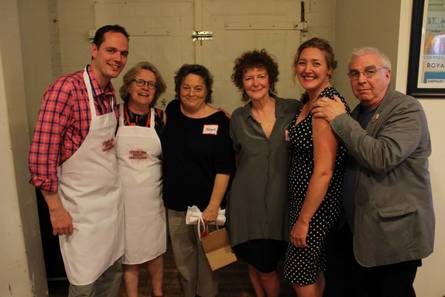Ever since I was a little boy, I have been fascinated with origin stories. How my father’s parents came to America, how my mother and her parents escaped the Holocaust and came to start over in New York, and how my uncles started their first business out of their living room in Brooklyn. The origin stories of people and their businesses can teach us a great deal about the values and underlying principles of their organization.
As a founding member of the Centre for Social Innovation in New York, I have heard our origin story, but I wanted to know more about the first CSI, which started in Canada. The Centre for Social Innovation was created in 2004 out of frustration about the lack of affordable workspace in Toronto for social enterprises and nonprofits. The five founders came from different industries: real estate, organizational development, urban development and government, research and social enterprise. However, despite their different perspectives, they all shared a commitment to creating an affordable co-working space with the infrastructure and shared services to allow members to focus solely on their missions, and that this commitment would enable them to better catalyze social innovation.
An early key to CSI’s success was, surprisingly, their modest expectations and willingness to test new ideas. They started the space as an experiment without a business plan or specific expectations. Relying mostly on volunteers, they were able to keep their costs low and start small, with just 14 member organizations. This allowed CSI to create an organic growth strategy rather than a formal plan, and scale manageably in response to demand.
What was once a single space in Toronto has now expanded to three locations in Toronto and one in New York, plus a new franchise location that opened this month in London, Ontario. CSI has also published six books about their methods for creating collaborative spaces for change.
CSI Toronto’s success is an interesting study in how an organization can have a high degree of complexity and flexibility and still maintain a strong, vibrant culture. Particularly as they scale to an even larger organization, the fact that their values are strong enough to spread to new locations is particularly impressive. This is especially compelling considering that many CSI members are multi-project entrepreneurs, freelancers, students or career-changers who bounce between other locations and CSI, and sometimes even between different CSI locations.
A few factors contributing to CSI’s success are:
1. A Careful Selection Process.
For an organization to join CSI, their application is reviewed by several staff members to ensure that each new member is a strong fit regarding their commitment to social purpose and to working in a collaborative community.
2. Member Orientation is a Standard of Excellence
Each new member attends a carefully prepared and facilitated orientation session which allows new members to learn their roles and responsibilities at CSI, as well as the many value-added resources the community offers.
3. Iconic Rituals Express the CSI Brand
While the rituals that have become synonymous with the CSI brand began spontaneously, their leaders recognized how connective they were for the community and how important it was to solidify their importance. CSI’s holiday Cookies-and-Cocktails competition allows members to express both their competitive spirit and share it in a social context. Salad Club, a weekly communal lunch, is a fixture that brings members out to meet and share ideas. Quarterly networking summits, where members can meet each other and exchange ideas, and an annual town hall to review CSI’s policies and the community’s needs are more structured ways to deepen the bonds between CSI and its members and between its members. These rituals, whether they revolve around networking or socializing, help cement CSI’s unique company culture without asking a lot of individual members.
4. Collaborative Decision-Making
In order to build a community that now has over a 1000 members across 5 locations (with a small staff and a modest budget), members need to be involved in helping the space run. Keeping our space clean, managing noise, keeping the public spaces tidy and helping to support community events are all critical in making CSI a community rather than a collection of independent organizations. Members have even invested in CSI, buying Community Bonds to help them buy the two buildings, further establishing the feeling that it is “their home” as much as the owners.
5. Dynamic, Committed Leadership
From the very beginning CSI’s leaders have had a huge stake in the organization’s success. They put a bet on the solution, the experiment that became the first CSI location at 215 Spadina Ave. And while the bet was relatively small in terms of money, it was big in terms of a belief in the future. Tonya Surman jumped in as a volunteer to help CSI get off the ground and Margie Zeidler donated the space initially. Tonya’s volunteer position turned into a full time commitment (she’s currently CEO of the organization), with other founders and other pitching in to help. The first 14 members were also committed leaders with a big investment in CSI’s success. If it failed, they would have to leave and find another home. This shared commitment is critical to the success CSI has seen.

